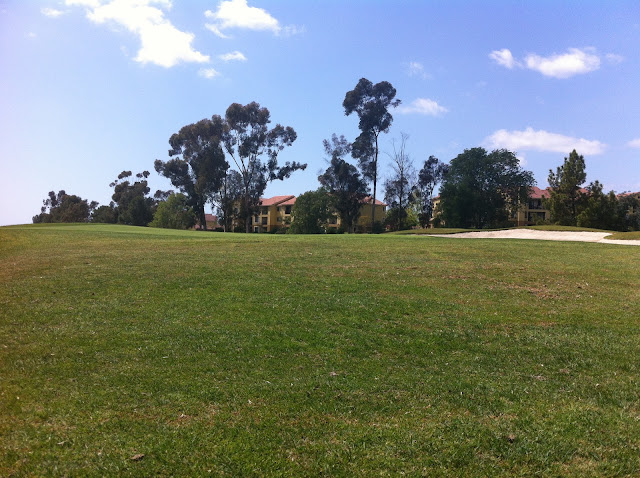Water is always a major topic around the club. The frequency of a water-related discussion has only increased since the discovery of our new water source and the construction of the reservoir. Visions of lush green turf from one corner of the property to the other can't help but creep into the minds of everyone who believes that more water is surely the answer.
I believe that more water is rarely the answer when it comes to growing turf. We already use plenty of water, but we need to use it more effectively. Quantity is not the limiting factor and adding more water will not solve all the brown spots.
I apologize if this is too technical in nature, but I've had this conversation dozens of times with individual members and it's time to put it on the blog. So here goes the explanation of hydrophobic soils:
Soil particles sometimes repel water and refuse to get wet. Water passes around the soil, through the soil, over and under, but does not stick. The roots certainly cannot take advantage of water that is not there. Adding more water does nothing to solve this problem. That's just more water finding a drain line or recharging San Diego's ground water supply, and maybe our well.
You've all seen hydrophobic soils before. When you let a house plant become extremely dried down and attempt to water it, the water hits the counter or floor as soon as it leaves the watering can. The soil is still bone dry and the plant is no better off than before your attempted irrigation. This is hydrophobic soil. It is cause by organic acids that build up on the soil particles. The soil needs to be treated with a wetting agent to get it to accept and hold water.
Here are a couple of pictures of the 4th fairway:
The brown spots and the green spots get the same amount of water, but they obviously are not performing the same. This area is all hybrid bermuda and needs very little water to succeed. The brown locations are suffering from what we call localized dry spot. This is hydrophobic soil that repels water. We could stick a hose or sprinkler here all day and the green spots will get wetter, the brown spots will not change. This was all green a week ago, but our wetting agent has worn off and needs to be reapplied, a scheduled event, starting soon. Today we dealt with a power outage (which also knocked out irrigation) so we'll have to wait another day.
You've all seen hydrophobic soils and you've all used wetting agents. The soap that helps you do dishes or wash your laundry are both wetting agents. The primary purpose of these products is to break surface tension. The wetting agents we use break surface tension, facilitate water movement into the soil, and may also hold or move water in different degrees.
So, more water is not going to work on #4 and we don't want to waste water regardless of the source.
There are many other issues we need to address when trying to improve irrigation efficiency. I'll explain some of our other efforts in another post because this one is much too long and probably put you to sleep.













